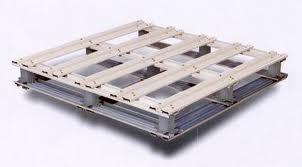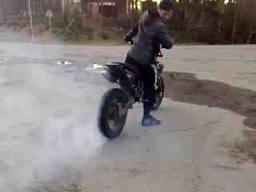
Traction is an essential element
With out it, your sliding around on the ground, not cruising through your corners. So how do you tell when you’ve got traction, what’s all this talk we hear about “feeling” for the grip?
I mean seriously how do you feel for grip? and how do you learn that feel without pitching yourself down the road. Well the good news is that you can learn this skill and you don’t need to risk yourself or your toys to get it.
Firstly you need to understand that the grip we talk about is mechanical adhesion, or grip that is based on Guillaume Amontons laws of friction. The first of these laws probably makes an incredible amount of sense to you.
The friction between two surfaces is proportional to the force pressing one to the other. The weight of a motorcycle pressing the tire into the pavement. “Proportional” just means that if you double the pressing force you double the friction.
The second law is the one that gets everyones knickers in a knot!! The friction is independent of the contact area. That’s right, bigger tires or more rubber don’t give you more grip. I know, it doesn’t make a lot of sense does it? but trying not to bore you with the physics just take my word for it, the bigger surface area does not mean more grip.
Ok, I know that’s not going to satisfy you is it… so here goes. Given the first law, you apply more weight you get more friction, is probably not in conflict with your sense of right, we can deduce that if you reduce the weight you will reduce the friction. As an example think of a pallet of bricks.. it has lots of friction, now remove most of the bricks and the friction will reduce enough for even the whimpiest of us to push it along. So if you apply the same weight (force) over a much bigger area rule 1 would say that friction is reduced, put bigger tires onto the same bike and you will spread the weight over a bigger area and could even end up with less friction.


Ok.. I hear you say why do bigger bikes get bigger back tires then!!! Go on answer that one for me!!! Ok, Bigger bikes put more power through a tire and therefore generate more heat. You disapate heat by increasing surface area (Bigger tires), also bigger tires take more power before flexing. If you were not able to dissipate that heat your tires would over heat and that wonderul process that makes your tires, Vulcanisation (which isn’t a form of startrek jargon) would start to reverse and leach oils out onto the tire… next thing you would find out is that the three laws of friction only apply to dry friction. But that’s ok because you could contemplate that whilst healing up.

But wait a minute… don’t we want our tires to get hot?? does heating up the things give you more traction??? The answer is of course, yes and that is because of a thing called the co-effecient of friction and molecular rearrangement. However; we don’t want our tires to get too hot because then the opposite happens, instead of raising the rubber’s cF (co-efficient of friction) we lower it, quite dramaticallly.
BTW, do you know that your tires are capable of raising their Cf by being hotter but most substances don’t. Also they are a little like your Plazma Telly? they have a life span that can be measured in cycles, heat cycles in the case of your tires. Most modern tires wear out before they are destroyed by too many heat cycles, but not always.. so be aware.
So lots of stupid information… or is it. The first thing you need to do when learning how to “feel” traction is learn how to “feel” when your tires have warmed up and are offering more traction for your pleasure.
Ok, Friction resists your attempts to push the bike off the road, the more you have the more it resists. When you turn your handlebars, you twist the rubber against the road and it resists you. When they are cold there is little traction and the bars move easily, as the tires warm up their is alot more friction and the bars feel a little like your “stirring treacle”.
First lesson: you can feel traction through the handle bars
The best place to start to learn this is while you warm up those hoops. wiggle your handle bars a little (just a tiny bit) and “feel” the resistance to the turn, you’ll be amazed to find you can easily tell as they warm up and will even be able to talk about how quickly different tires warm up compared to each other using this technique.
Every corner, will soon become an opportunity for you to “feel” how much grip you are getting, because as you get used to feeling through those bars you’ll soon notice as you turn into a corner if the tires are warm and gripping.
Second Lesson: Every corner will become measure point for grip
This same grip is affected by the temperature of the day, if the road is wet or there is dust about. BUT IT WON’T BE ABLE TO MEASURE SUDDEN CHANGES LIKE GRAVEL, OIL ETC.
Lesson Three: you only ever find out about the general grip and that will change with the road surface.
But what about the rear tire? Well of course you can deduct quite a lot about the traction you have from the rear by listening to the front tire, especially if you remember that they are no different, their size is a little irrelevant remember.
But weight isn’t is it? and when you really want to know how much traction you have on the rear is when you are feeding power into the tire on the exit of a corner right?
So lets look at that for a minute. As you enter a corner the front tire allows you to feel the grip, then mid corner the grip is roughly the same as is the weight. Once you start to wind your way out of the corner things start to change, the weight transfers to the rear more and more as you start to accelerate out. The weight comes off the front at the same time. As you also start to stand the bike up your bikes weight, which has been divided between a virtical component on the tires and a horizontal component that is trying to push them sideways, moves more and more over the tires and raises your grip levels.
The end result is breaking grip on the rear (when you have plenty going in) is when you use too much throttle whilst still leant over, i.e. getting on the throttle too hard too early rather than simply to hard. In fact if you get on the throttle not too early, but too agressively what you will get is the same thing you would get in a straight line, a wheelie and loss of traction on the front tire, not the rear. YOu will feel this in the front, trust me :-).
So if you are racing and wanting to get onto throttle earlier and earlier, you need more skills, but if you are a road rider and wanting to get onto the throttle harder out of corners, you just need to feel for the front grip and be progressive, sudden impact throttle can break your tire loose, but then its not a problem of grip, but your daft technique!!!!
Lesson Four: balance your corner exit grip using the feel from the front tire
Wait a minute, why do the racers loose the back so often then and highside themselves??? Well usually this is because of the tremendous wear going on on the rear tire and that they are no longer running the same Cf. Also they are trying to drive harder and more importantly EARILER out of the corner.
So you ask, if I am not wanting to wait to get of the gas really hard until I have started transferring weight (starting to stand up hte bike), if for instance I am racing and looking for how early and how hard I can get onto the gas, how do I do that?
So this next bit is for the race track , not the road. its harder to judge and has a much smaller margin of error. Just so you have been warned!!!!
Just as when you move the bars the front tire resists your movement and you can feel the grip, as you get on the power in a corner the tire grips the road as weight is transferred and resists that extra weight.
The result of this is that the rear suspension compresses more, the bike “squats”. Squatting is good, it indicates the level of grip, the harder you acelerate the more the bike squats, as you run close to the limits of grip the bike doesn’t squat anymore and a split second later slides. if you don’t feed anymore power in when the bike stops squatting, it probably will still slide but only in leaving a black line behind and a slight oversteer coming out of the corner. If you do keep putting in power, you’ll get something alot more dramatic and be ever so tempted to close that throttle. But then we both know what happens next if you do that :-).
Please keep in mind that at this level of margin a bump in the road, colder section of road or even just a twitch in our throttle hand can tip you over the threshold, you’re starting to deal with a high potential for a slide, make sure you are happy to deal with it before you try it.




2 Responses
This is the right website for anyone who wants to understand this topic. You understand so much its almost hard to argue with you (not that I really would want toÖHaHa). You certainly put a brand new spin on a subject that has been discussed for many years. Wonderful stuff, just wonderful! This is the right website for anyone who wants to understand this topic. You understand so much its almost hard to argue with you (not that I really would want toÖHaHa). You certainly put a brand new spin on a subject that has been discussed for many years. Wonderful stuff, just wonderful! נערות ליווי בבת ים